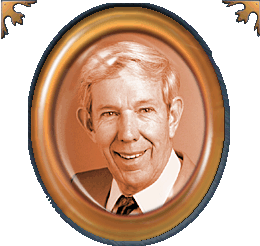Erickson: Do you think that if Provost Watkins had stayed for a longer period that maybe some of these things would have been worked out? That is not fair because you weren't here.
Way: I shared an office with Gordon Watkins when I first came.
Erickson: So he was still here in 1957?
Way: He had just had a brief illness and came back to campus.
Erickson: He was not Provost?
Way: He was not Provost. No, Herman Spieth was Provost. No, I don't think so. I think it would have been more of the same. Yes, I just don't think Gordon had … he had a vision, but I don't think he understood that he needed to get some things down in writing perhaps and get a commitment from University Hall about the funding for this campus. And in looking back, there was no way that was going to happen. They were not going to give that kind of commitment.
Erickson: Then why do you suppose they allowed this four-year liberal arts college to be formed, if they weren't willing to support it?
Way: Well, I think they were willing to support it, but I think that they expected at some future point it would come within the budgeting standards of the other campuses, namely Berkeley and Los Angeles which had been established and Davis. Santa Barbara was just barely getting started. Of course, the other campuses weren't there at all, hadn't been formed.
No, I think they wanted to start a new campus, but I think if you went back to The Regents at that time and interviewed them, they would not have memory of saying, "Yes, we anticipate that this will be a small liberal arts campus in perpetuity." No, I think they anticipated at some point it would look very much like the rest of the University campuses. And certainly internal to this campus, that's what many people here thought. The people who bought, I think, into the vision of a small liberal arts campus were large number of people in humanities, and some in the social sciences, perhaps a majority even, and a few in the sciences.
The scientists, by and large, were not comfortable with that idea. They wanted graduate students. They didn't think that they could meet the demands of scientific output without running a full scale graduate program, in order to get the grants for outside, extramural funding, to have the type of person-power necessary to do major research projects.
I think if you looked around the country then, and perhaps even to this day, small liberal arts campuses often have very strong people in the humanities and social sciences, where scholarship isn't dependent on the presence of a graduate program. Whereas, I suspect if you look at Amherst, Dartmouth and Swarthmore, or Reed, or Pomona, that it's not quite the same in the sciences. They need Ph.D. programs, or at least that's what the first divisional chair in the physical sciences said.
